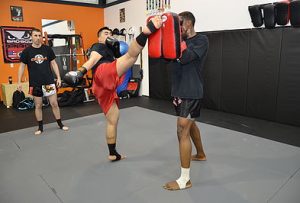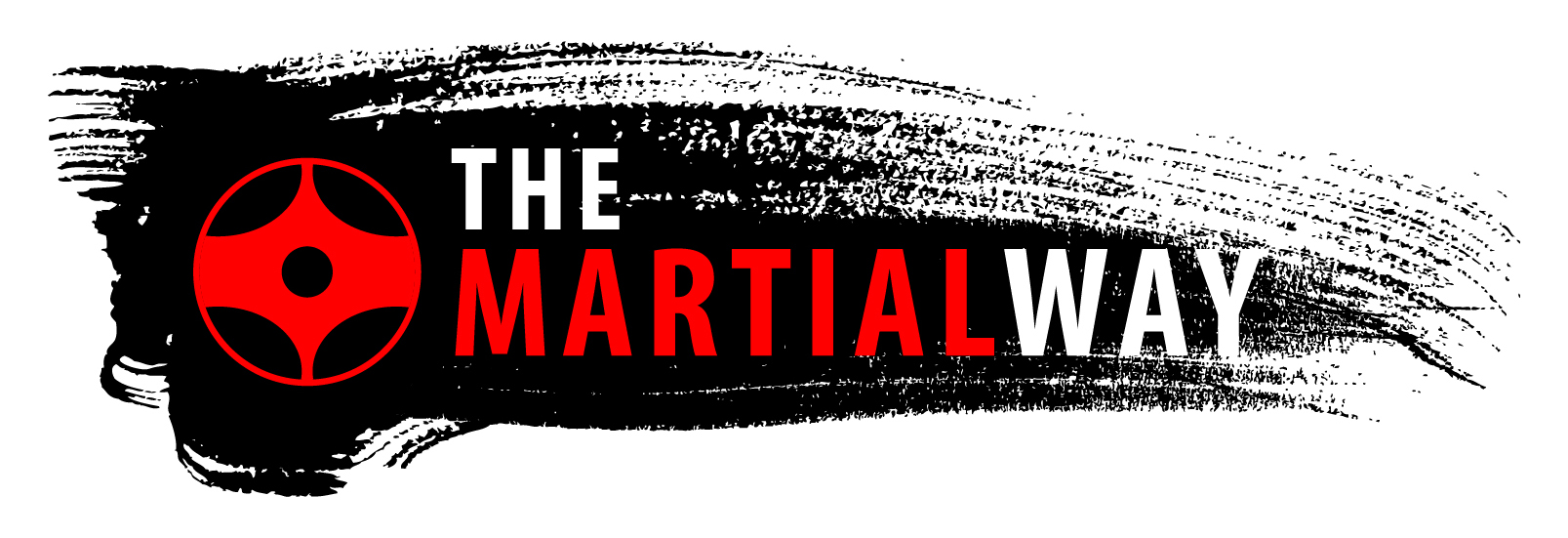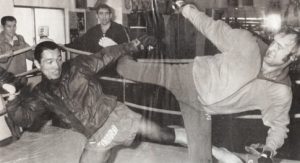Last night was another first for me in martial arts. Being punched in the face… intentionally!
 I am lucky to belong to a dojo that not only teaches very high level Kyokushin Karate, but also Dutch Style Kickboxing, under Sensei Steve Fogarasi. I have been attending Contact Kicks dojo, in Vaughan (a suburb of Toronto), Ontario, Canada, for a few years now. Studying Kyokushin and a little Brazilian Jiu-jitsu, but I hadn’t tried kickboxing.
I am lucky to belong to a dojo that not only teaches very high level Kyokushin Karate, but also Dutch Style Kickboxing, under Sensei Steve Fogarasi. I have been attending Contact Kicks dojo, in Vaughan (a suburb of Toronto), Ontario, Canada, for a few years now. Studying Kyokushin and a little Brazilian Jiu-jitsu, but I hadn’t tried kickboxing.
As many of you that read my blog know, I began my Kyokushin journey after studying non-contact (or very light contact) martial arts when I was younger. Having achieved black belt, but never feeling “legit”. This brought me to Kyokushin later in life, where I wanted to know what it felt like to really hit, and be hit.
It was an eye-opening experience for sure, and the beginning of a path that quite literally has changed my life. Which I have dedicated this blog to. My love and passion for Kyokushin Karate has really grown, along with the connection I have to my dojo family and Sensei.
So, I have learnt how to hit, and take a hit, but I still hadn’t taken a punch in the face. I felt it was time to step up!
I joined the Kickboxing class and though it wasn’t as intimidating as joining Kyokushin for the first time, as I have more skill now, I was still very nervous how things would go.
The classes have been diverse and challenging my endurance, but that was nothing until we sparred!
Kickboxing was a whole new world! The timing, distancing and movement is very different from Kyokushin. The psychological aspect is completely different when you know you have to protect your head. It’s hard to put into words, but it brings the realism up another level.
My first couple rounds went pretty good, but then I sparred with Coach/Sensei Fogarasi. As in Kyokushin,  I was schooled. Having my bell rung a couple times gave me a different appreciation for combat sports. As Mike Tyson said best, “Everyone has a plan ’till they get punched in the mouth.”
I was schooled. Having my bell rung a couple times gave me a different appreciation for combat sports. As Mike Tyson said best, “Everyone has a plan ’till they get punched in the mouth.”
I am really looking forward to continuing in Kickboxing, as I believe it will improve and benefit my Kyokushin as well. And there is no doubt Kyokushin prepared me somewhat for Kickboxing. Which makes sense, knowing its roots.
The origins of the style taught at Contact Kicks, Dutch Kickboxing, is derived from Kyokushin Karate.
As many know, Mas Oyama, the founder of Kyokushin Karate, created a culture where his students where always testing themselves trying to improve their Karate. Mas Oyama’s right hand in the beginning was Kenji Kurosaki. Kurosaki had a reputation for being a very tough fighter.
In 1964 Muay Thai boxers challenged Oyama’s Organization to perform three bouts against their champions of Muay Thai. Oyama accepted the challenge, and Kenji Kurosaki was part of the Japanese team that traveled to Bangkok to face the Thai team.
Kurosaki left to start his on dojo, the Mejiro Gym, (now called the Kurosaki Dojo) which quickly became, and still is, one of the leading Japanese Kick Boxing Dojos in Japan.
Among his students, Kurosaki Sensei had many great Champions, including Toshio Fujiwara, Jon Bluming, Jan van Looijen, Jan Plas and Peter van de Hemel, who where all in their own way important for the development of Kickboxing in the Netherlands.
Jan Plas and Thom Harinck founded the NKBB (The Dutch Kickboxing Association). The most prominent kickboxing gyms in Netherlands, Mejiro Gym, Chakuriki Gym and Golden Glory, were all derived from, or highly influenced by Japanese kickboxing and Kyokushin Karate.
Dutch athletes have been very successful in K-1 Kickboxing. Out of the 19 K-1 World Grand Prix championship titles issued from 1993 to 2012, 15 went to Dutch participants (Peter Aerts, Ernesto Hoost, Remy Bonjasky, Semmy Schilt and Alistair Overeem). The remaining three titles were won by Branko Cikatić of Croatia in 1993, Andy Hug of Switzerland in 1996, and Mark Hunt of New Zealand in 2001. In more recent years Dutch Kickboxers have been seen in Glory Kickboxing with the likes of, Jahfarr Wilnis, Jason Wilnis and current welterweight champion and five time world kickboxing champion, Nieky Holzken.
We shall see where this part of my journey will take me, and I am glad I have been building a strong foundation for this under a great teacher.


